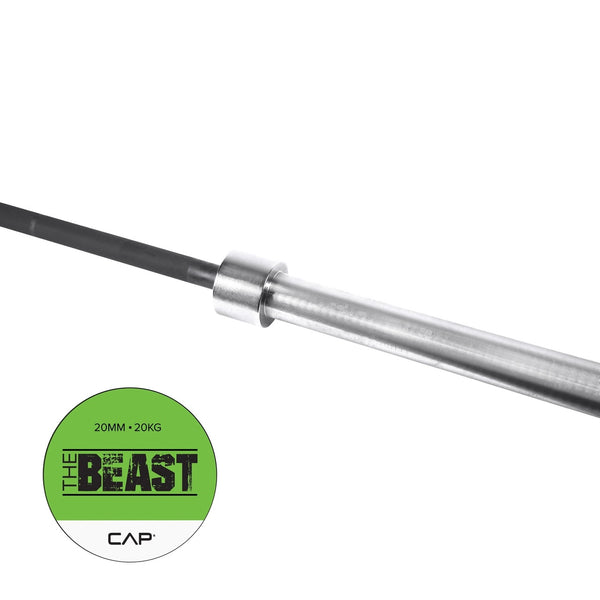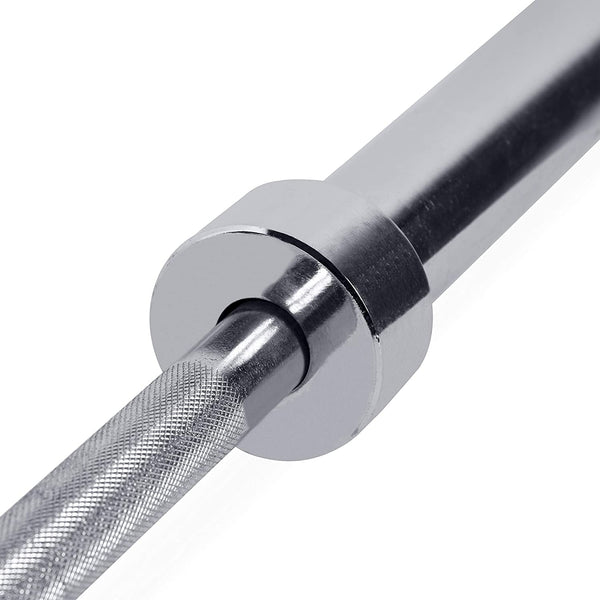Your Cart is Empty
July 04, 2023 2 min read
The deadlift is one of the most popular exercises in the gym and for good reason. It’s a compound movement that targets multiple muscle groups, so it’s great for building strength and power. But what muscles does the deadlift work specifically?
Shop The Collection: BarbellsThe deadlift works primarily your posterior chain, which consists of your glutes, hamstrings, lower back, and traps. It also works your core, quads, lats, and forearms to a lesser degree. Let’s take a closer look at each muscle group.
 Shop The Gear: CAP Barbell "THE BEAST" Olympic Bar, 1000-LB Capacity, 7-ft, $145.99 USD
Shop The Gear: CAP Barbell "THE BEAST" Olympic Bar, 1000-LB Capacity, 7-ft, $145.99 USD
The glutes are the primary muscle group worked during the deadlift. The glutes are responsible for extending the hips, which is the main movement involved in the deadlift. If you want to build a strong and powerful butt, then the deadlift should definitely be a part of your workout routine.
Shop The Collection: BarbellsThe hamstrings are responsible for knee flexion, which occurs as you lower the weight. They also help to stabilize the hips and keep the torso upright during the lift. Strengthening your hamstrings can help to improve your performance in other exercises such as squats, lunges, and sprinting.
 Shop The Gear: CAP Barbell Olympic Solid Bar, 5-ft, from $63.99 USD
Shop The Gear: CAP Barbell Olympic Solid Bar, 5-ft, from $63.99 USD
Your lower back plays an important role in maintaining proper form and preventing injury during the deadlift. Your lower back muscles help to keep your spine neutral throughout the lift, which helps to prevent strain or injury. Strengthening your lower back can also help to improve your posture and reduce back pain.
Your traps are responsible for upper body stability during the deadlift. They help to maintain a stable shoulder position and prevent the bar from rolling out of your hands. Strengthening your traps can also help to improve your performance on other exercises, such as lat pull-downs and shoulder presses.
Your core muscles play an important role in keeping your torso stable during the deadlift. They help to keep the spine neutral and prevent your hips from rising too quickly. Strengthening your core can help to improve your performance in other exercises, such as planks, sit-ups, and mountain climbers.
Your quads are responsible for knee extension, which is necessary for pushing the weight off the floor. They also help to stabilize your hips throughout the lift. Strengthening your quads can help to improve your performance in other exercises, such as squats and leg presses.
Your lats are responsible for retracting your shoulder blades, which helps to keep the bar close to your body during the deadlift. Strengthening your lats can also help to improve your performance on other exercises, such as rows and pull-ups.
Your forearms help to grip the bar tightly and prevent it from slipping out of your hands. Strengthening your forearms can help to improve your performance on other exercises, such as bicep curls and tricep extensions.
Overall, the deadlift is a great exercise for targeting multiple muscle groups. It’s especially effective for building strength and power in your posterior chain, which consists of your glutes, hamstrings, lower back, and traps. It also works your core, quads, lats, and forearms to a lesser degree.
So if your goal is to build a strong, powerful, and balanced physique, then the deadlift should definitely be a staple in your workout routine.